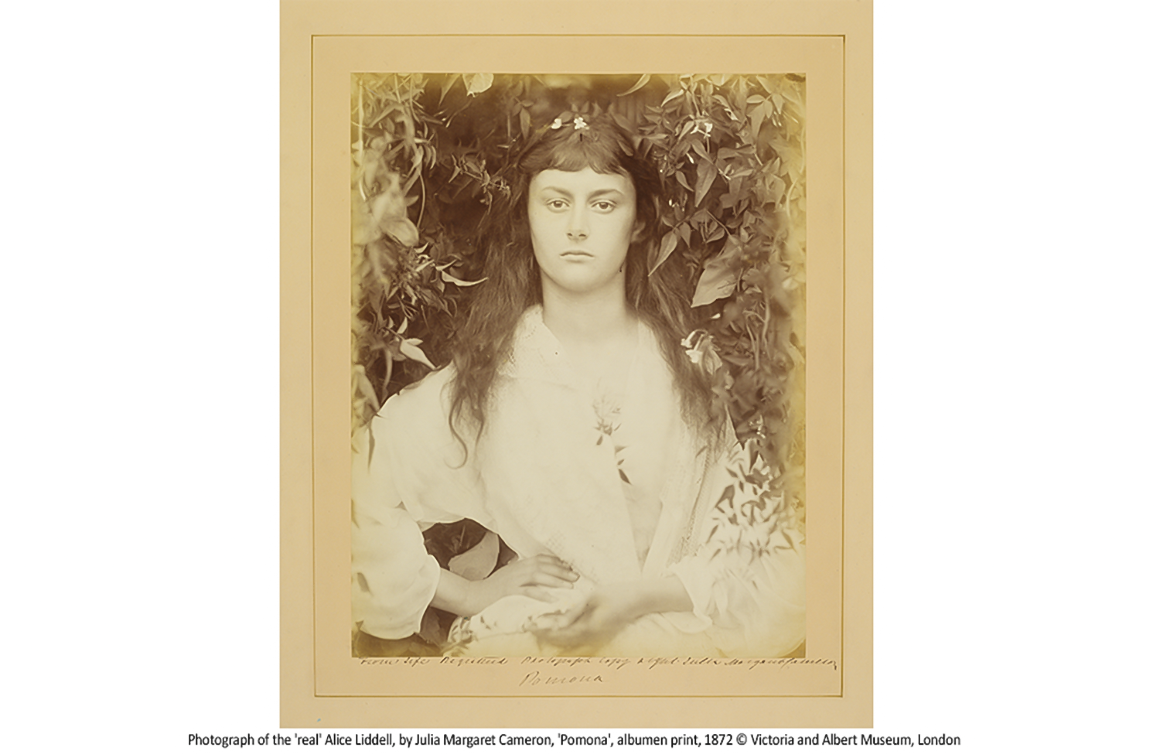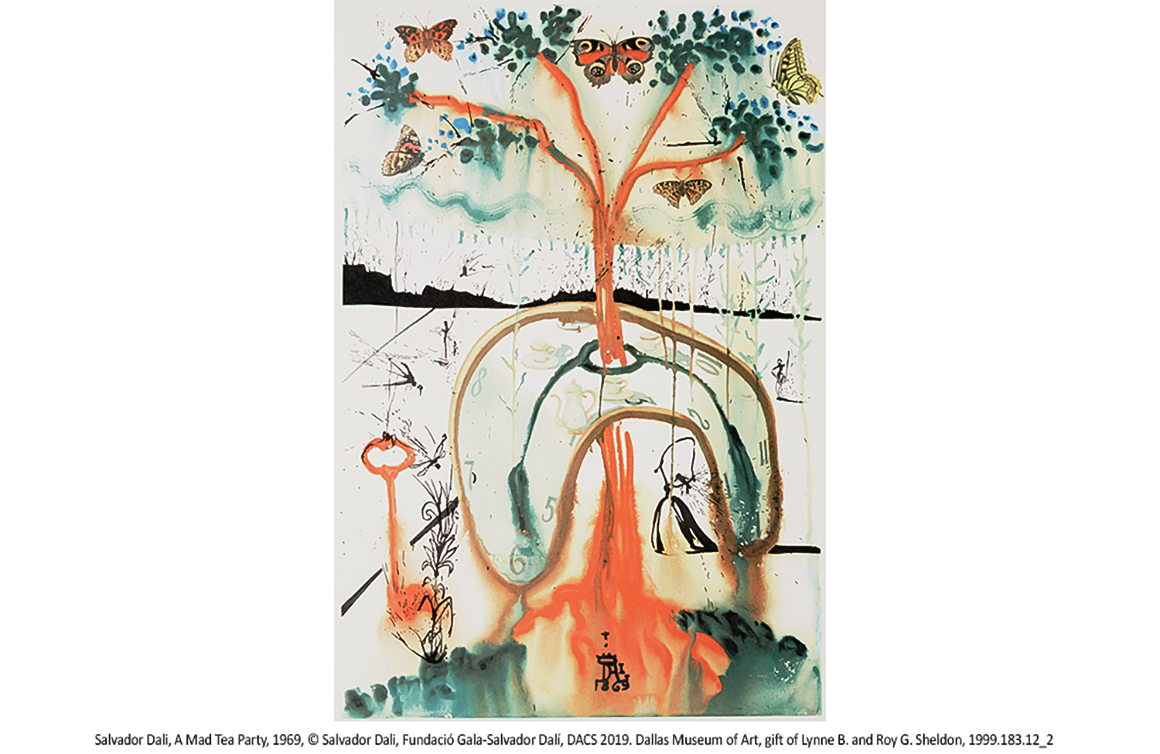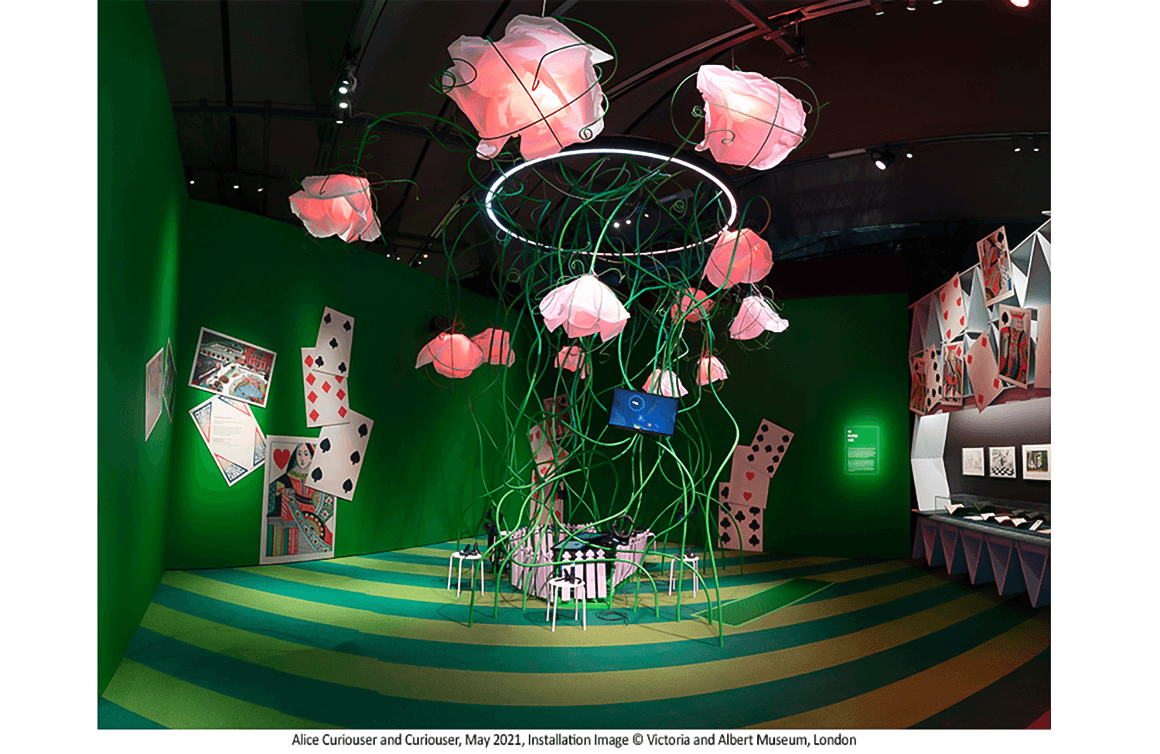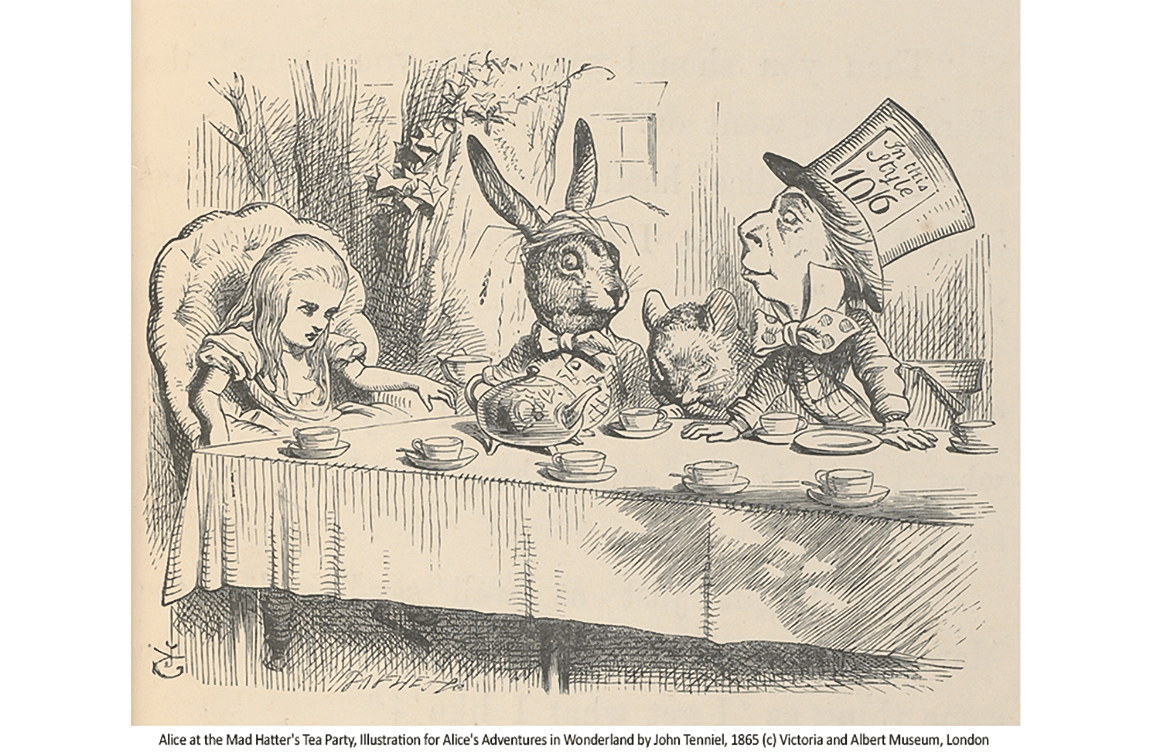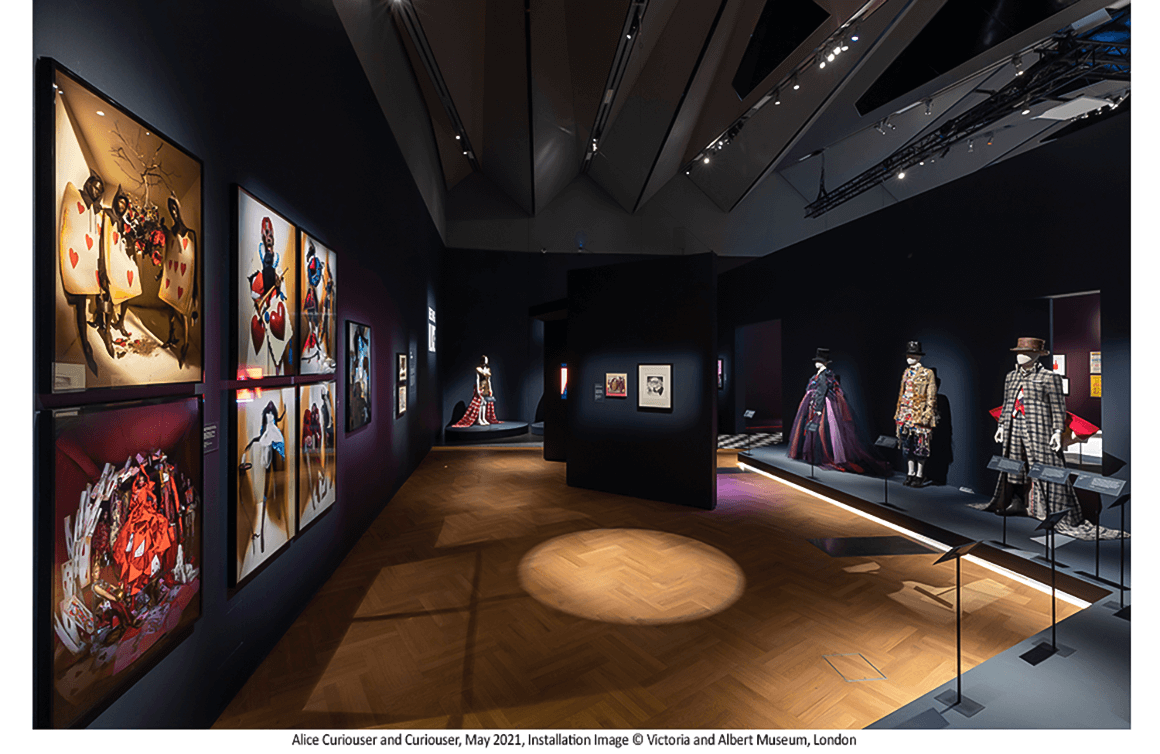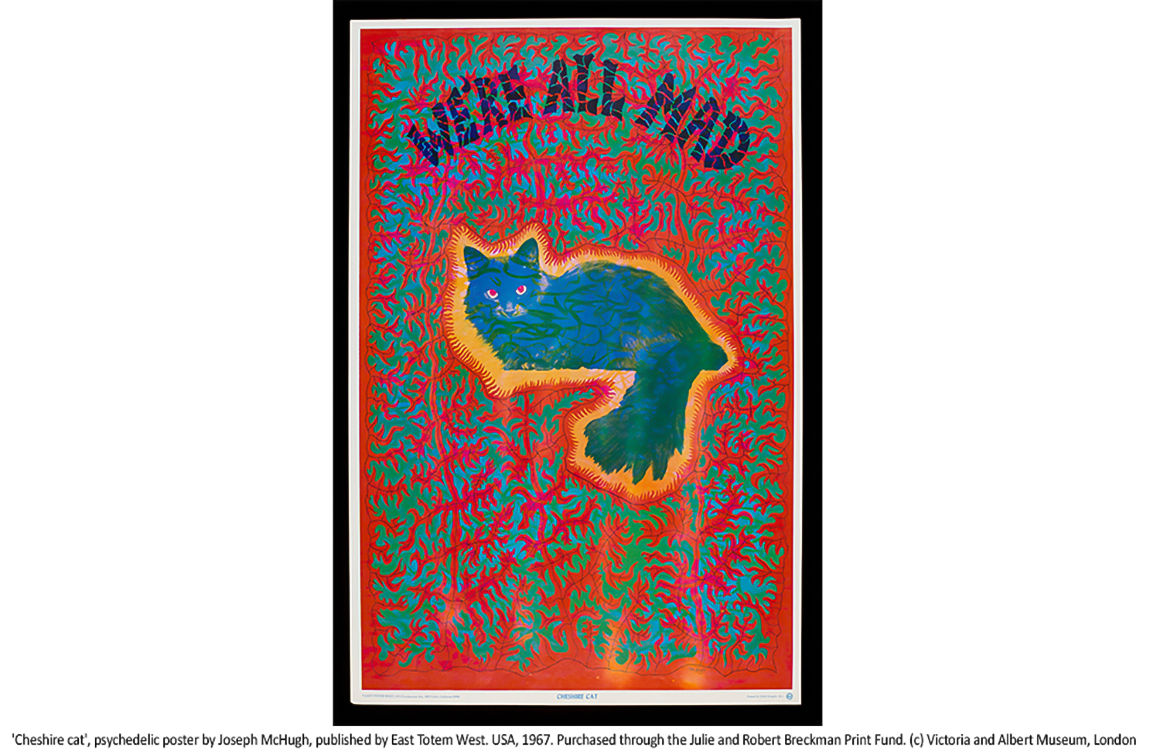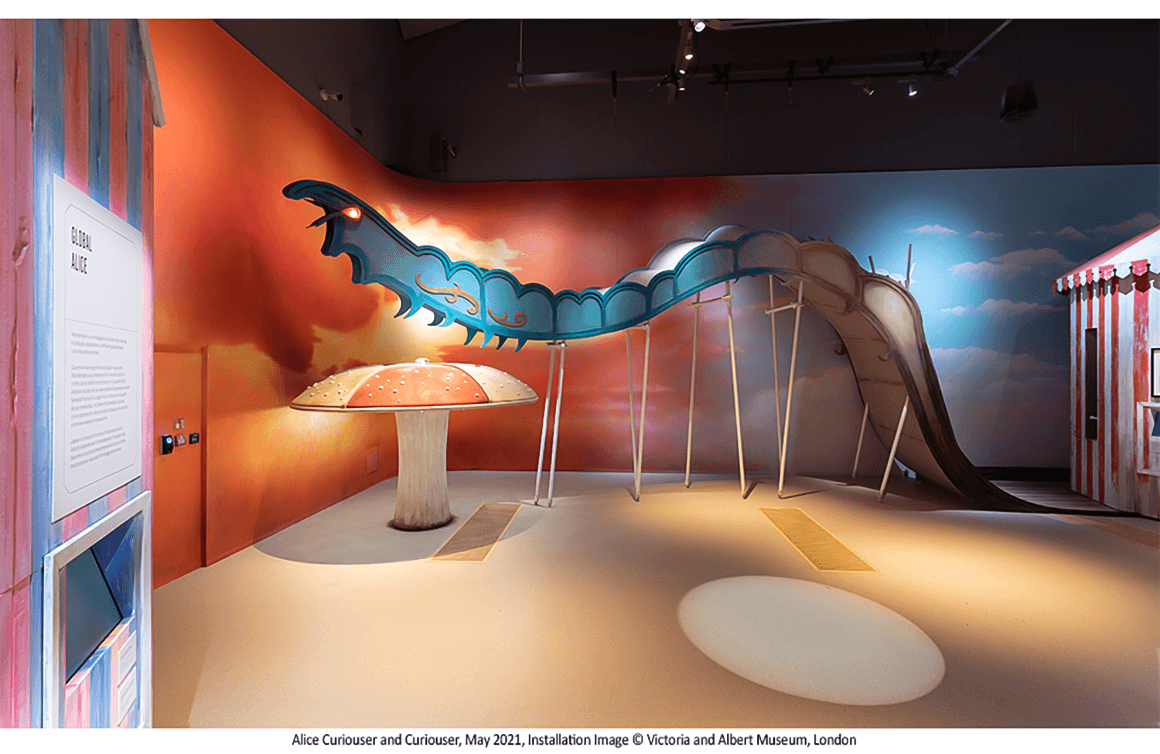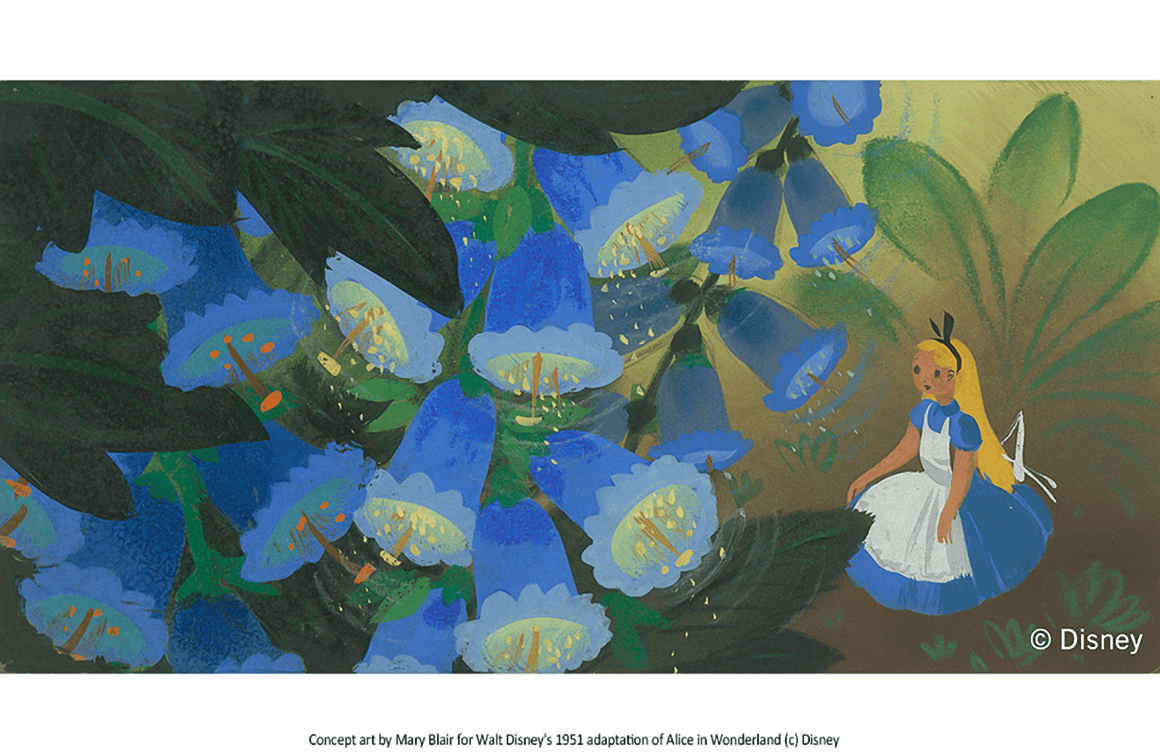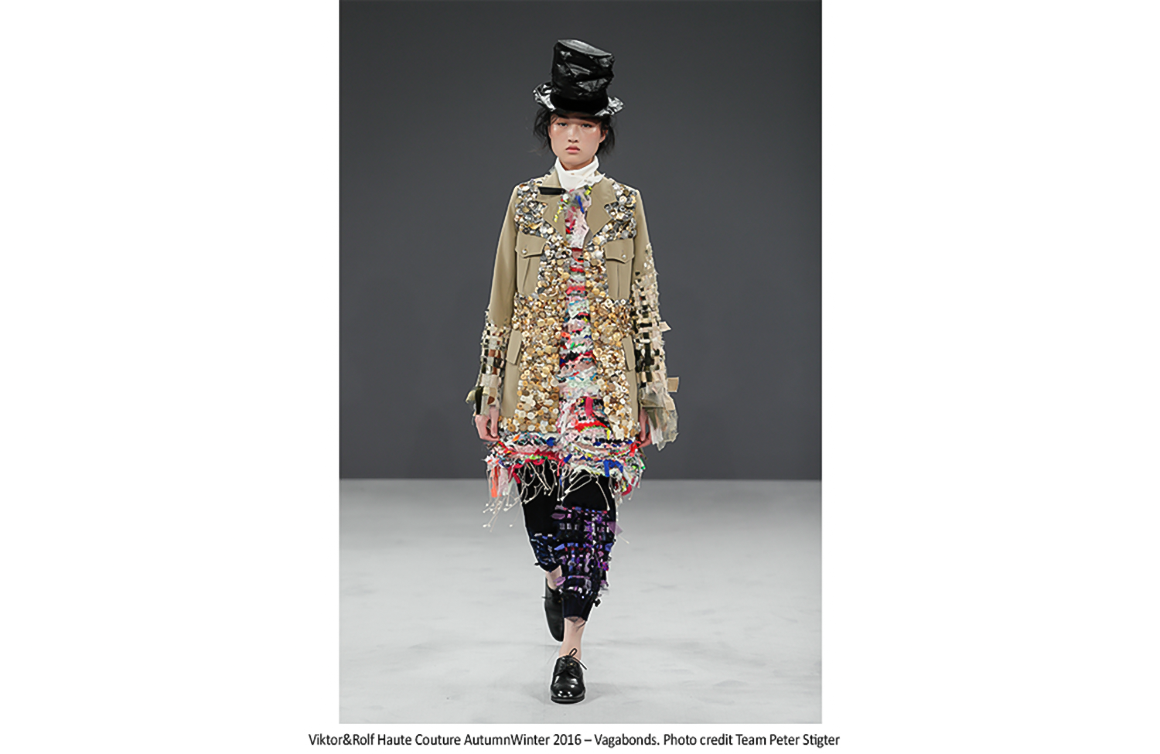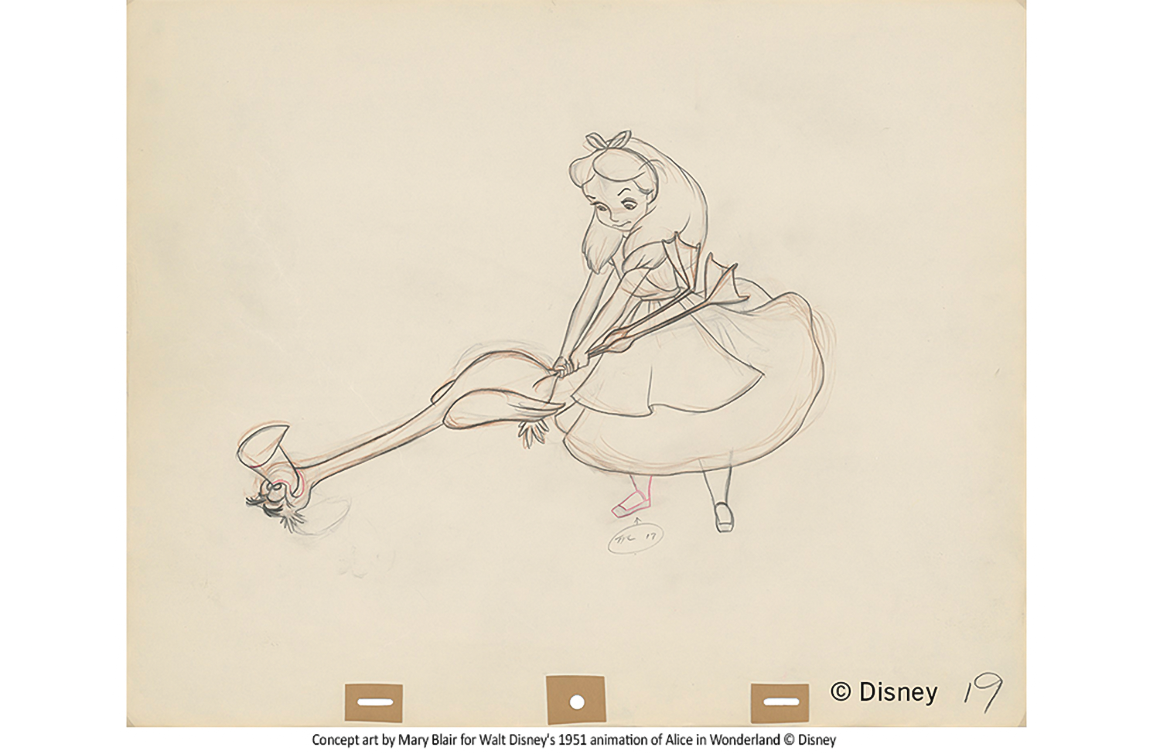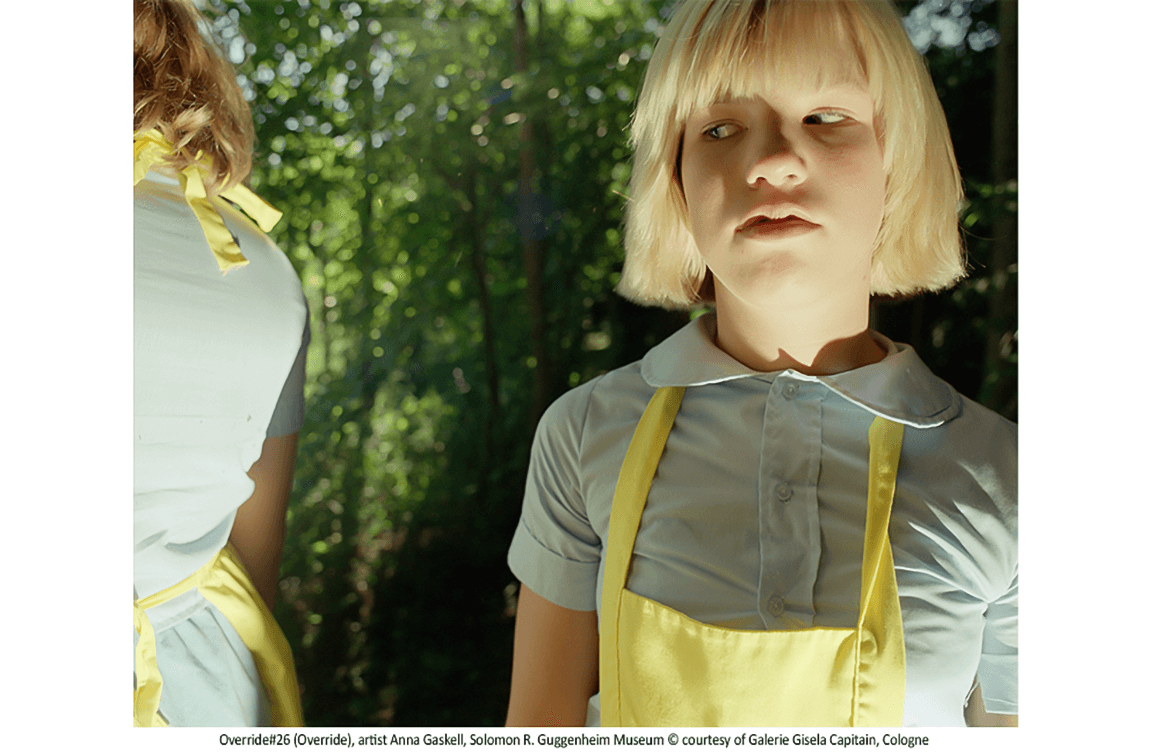Tell us about the Alice: Curiouser and Curiouser exhibit at the Victoria and Albert Museum.
The exhibition is literally in a subterranean gallery at the museum. It’s immersive — it takes you on a journey, as if you’re Alice, through Wonderland. On that journey, visitors explore the impact and the legacy of the books across time and across media.
We set the book in its original context, look at how the story was first told, then consider how the book was created and the planning that went into it. The exhibit then looks at how that gets adapted into different forms, from film to fashion to photography. There’s a virtual reality component where visitors can explore moments where Alice has agency, where she grows, shrinks, and goes through doorways — you can even play a game of flamingo croquet. Whilst we take this journey through Wonderland, we take you through moments in the book, whether it’s the Pool of Tears or the Tea Party.

Alice’s Adventures in Wonderland was first published in 1865. Where did you begin when curating an exhibit to honour stories and characters with so much history?
I very much started in the present and asked “why?”: why have these stories, why has this character, and why have these books been translated into 170 languages? How are they still relevant? What is it about the story and its characters that have enabled such creativity? I look very much from today and then asked those questions at different moments in time.
The more I asked the questions, the more I realized you can get from Alice to anywhere. Starting by looking at the themes in the book with a strong sense of character — the iconic nature of Alice — the fact that these books can be adapted in such a diverse way across many different cultures and societies. There’s something ever-enduring about Alice, who takes this journey through a nonsensical universe and asks questions of herself and questions of the world around her and speaks truth to power. Her sense of adventure still feels incredibly free and really opens our imaginations.

The Victoria and Albert Museum has commissioned six new animated interpretations of Alice’s Adventures in Wonderland and Through the Looking Glass. How do these interpretations complement the legacy of Alice?
The animations project is independent of the exhibition. That was created by looking at the stories, looking at chapters. It feels like there are still many more versions of Alice to be created. To offer that to animators definitely fuels a contemporary imagination. And we very much wanted to show that this book continues to inspire.

You’ve also partnered with the Royal Mint on a series of collectible coins. Tell us about that partnership.
The museum worked with the Royal Mint on two anniversary coins. One features The Cheshire Cat from Alice’s Adventures in Wonderland and one will come out later in the year that features Tweedledum and Tweedledee from Through the Looking Glass.
I think what’s so interesting about the coins is Sir John Tenniel’s original illustrations for the Alice books. His work is so detailed, meticulous, and precise. The way he worked with scale in his engravings, then into woodblocks, and then creating the prints, it just feels that those original illustrations lend themselves so brilliantly to the kind of scale and the precision of creating coins.

What do you hope visitors to the Alice: Curiouser and Curiouser exhibit will take away from the experience?
I really hope that everybody gets that chance to be Alice and to see how she’s still relevant.
I hope they understand that these stories, with their fantastic, bold scientific concepts — from spiraling down a rabbit hole to stepping through the looking glass — deal with powerful ideas and open our imaginations. I hope visitors look at Alice in a very 21st-century way even though she is a Victorian character.
There actually was a real Alice — the character was based on a real little girl growing up in Oxford. I think it’s powerful that there was a real person named Alice who has gone on to inspire artists, designers, performers, musicians, and filmmakers the world over. I hope visitors reflect on that legacy and on the power of great stories and great characters.

The Alice: Curiouser and Curiouser exhibit runs through December 31, 2021 at the Victoria and Albert Museum. A cinematic release of the exhibit is also in development.


